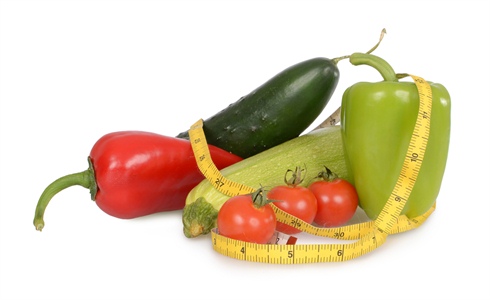Lose Weight > Common Sense To Lose Weight > Common Sense Article > The Best Cardio Workout to Burn Fat Quickly
The Best Cardio Workout to Burn Fat Quickly
There are definitely a couple schools of thought when it comes to burning body fat. Personal trainers recommend varying cardio workouts, depending upon their training. A common way of doing cardio is by exercising at a low intensity level. It is suggested that the majority of calories burned will come from body fat at a lower intensity level. A common belief is that if one exercises too hard, then the calories burned will come from carbohydrates in the muscles and not from body fat.
Although low intensity cardio is effective at burning calories directly from body fat, high intensity cardio burns many more total calories. One method for losing body fat is to burn more total calories throughout the day than what is eaten...high intensity cardio is much more effective at accomplishing this. So we have dilemma choosing between the two approaches. Let's look into this.
Low Intensity Cardio Workout Approach
This lower intensity cardio workout is what you will see in most gyms. It is a great way to burn body fat, since it targets the fat directly. No wonder why it is so popular! There have been numerous university studies that prove the effectiveness of performing aerobic exercise at a low intensity level. If done properly, it is great for directly targeting body fat.
Pick cardio equiptment that has a built in heart rate monitor. You want to do this to insure that you hit the ideal intensity level. It will take about 10 minutes to reach your target heart rate and at that point you will want to stay in that zone for about 30 minutes.
The High Intensity Cardio Workout
This is a less utilized form of cardio. High intensity training involves pushing past your pain threshold a bit, so fewer people choose this route. This cardio method can give great results in burning body fat if done properly. The total calories burned in high intensity cardio are greater than low intensity cardio. Some of those calories come from your body fat and some come from glycogen (carbohydrates stores within your muscles).
When you burn more calories in your cardio workout than what you consume, you create a calorie deficit. If you burn a more calories during the day than what you eat in food, you will lose weight.
The Imperfections of The 2 Versions of Cardio Workouts
With low intensity cardio, it takes about 10 minutes to get to the point where you are burning body fat. Those first 10 minutes aren't very productive. After the first 10 minutes things are great, but it is a bit of a waste of time getting to that point.
Very few people have the pain tolerance to push hard for more than 10-15 minutes. This is the challenge with high intensity cardio...it is miserable after 15 minutes!
How to Combine The Two Approaches Into One Awesome Cardio Workout
Why not start out at a high intensity level for the first 10-15 minutes and end with low intensity for 20-30 minutes? If you think of the two approaches...this completely makes sense! You are making the first 10-15 minutes of a low intensity cardio workout productive. Instead of wasting those first 10 minutes, you are burning a ton of calories...after 10 minutes you are burning a ton of body fat!
Find a treadmill or exercise bike and set it at a high level. Push yourself really hard for 10-15 minutes. Once you are really working up a sweat, switch to a low intensity and keep it there for 20-30 minutes. This will burn calories and create a calorie deficit as well as burning body fat during the workout. I maintain an 8% body fat percentage year round using this cardio approach.
Related Articles
-
Can Food Really Help Your Sinuses?
Most people do not pay even a small amount of mind to their sinus
-
T3 Liothyronine aka Cytomel For Weight Loss
T3 Liothyronine is a form of thyroid hor
-
12 Easy Ways To Boost Your Weight Loss
Pounds not shifting as fast as you would like? Here are fab-weight-
-
Fad Diets: Why Are They Bad?
It is not surprising that many people wo
-
Doing Away with a Weight Loss Plateau
As there are countless benefits to be gained from health and fitnes
-
Alkaline Detox Diet -- Better Health, Fat Loss And Increased Energy Are Possible!
Why wait for weight loss and health results when you can get instant g
- DON'T MISS
- A Clean Diet For Permanent Weight Loss
- Don’t Lose Confidence in Weight Loss
- How Stress and Cortisol Can Cause You to Gain Weight
- Shifting Lingering Pounds For Life.
- Why Spinning Bikes are So Popular
- Exactly How Caralluma Fimbriata Will Help You
- Weight Loss Psychology: Are Your Thoughts Making You Fat?
- Weight Loss For Good If Only You Had Known
- Losing Weight On Your Schedule, Easily And Simply
- How To Get Six Pack Abs?




